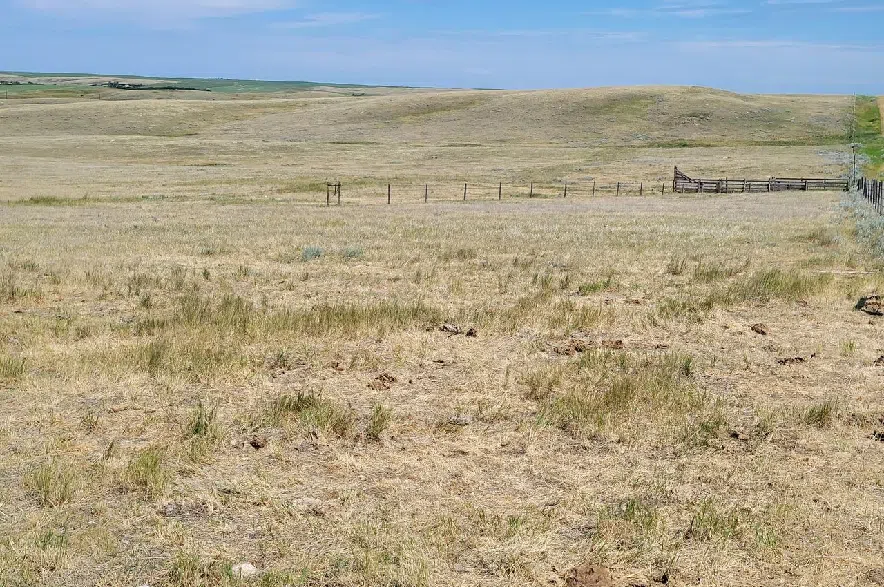Conditions are not looking up for farmers in the southwest corner of the province.
“Every day we can see the crops are burning up,” said Kelly Bakanec, a farmer and reeve of the Fox Valley RM. “More and more pastures are getting browner and browner.”
Bakanec’s farm is located about four miles east of Fox Valley. He said the damage from extreme temperatures is compounding what has already been nine straight years of drought.
“It’s the worst year that I’ve ever seen,” he said. “Another week or two of this drought, and we won’t even take our combines out. We’ll be lucky to scratch around and get our seed back right now.”
Read more:
- More warm weather ahead in Saskatchewan, but rain still in short supply
- ‘Lucky to break even’: Losses for crop yield in RM of Val Marie if no rain comes
- Big Stick RM councillors slam Sask. agriculture minister over drought inaction
Bakanec said the heat is accelerating the decline in crops that were already stressed.
Financial pressures are piling up for farmers as costs rise for inputs like fertilizer and fuel, while crop insurance coverage declines due to repeated poor harvests.
“Every year, a guy’s getting farther and farther behind,” Bakanec said. “The programs that are out there, they’re good programs, but they’re just not designed for nine years of drought. That’s short-term, a year or two of drought.”
About 55 miles northwest of Swift Current, Alvin Pawlitza is facing similar challenges at Hills Galore Stock Farms, where he raises registered Hereford, Angus and Charolais cattle.
“The pastures are going backwards. They’re drying off real quick,” Pawlitza said. “Quite frankly, once you’re 20-some miles south of me here, there’s nothing left of those pastures. They never got the start that they needed this spring.”
Pawlitza said while some areas near Leader and Sceptre caught decent rains earlier in the season, conditions have deteriorated quickly under the heat. Hay crops, in particular, are in trouble.
“It’s the lack of June moisture, and frankly May moisture, that’s really hurting the hay crops and the pastures,” he said. “Some of the grain crops may actually get through in the areas that caught some showers, but it’s the hay crops that are just in such dire straits.”
Many ranchers are already trucking cattle to pastures in northern Saskatchewan, or sourcing feed from as far away as Manitoba or northern Montana. But Pawlitza said the costs are staggering.
“You start buying feed and to truck it in, you’re $2,000 or $2,500 a load for, say, 40 bales, and you need 400 or 500 bales just to help get through,” he said.
Pawlitza also worries that gaps in current support programs leave Saskatchewan producers at a disadvantage compared to neighbouring provinces.
“The Alberta rainfall and hay insurance programs are far, far superior to ours,” he said. “We just can’t compete against those guys because they’re getting more dollars out of their insurance programs.”
He believes Saskatchewan needs trucking support and possibly new insurance tools, like those offered in the United States, to help producers survive repeated droughts.
“It’s been mainly people continue to procure feed, but it’s just getting so difficult to get it in here,” Pawlitza said. “People are worried about what we’re going to tell our kids if they want to stay.”
Despite the mounting pressures, both Bakanec and Pawlitza said farmers and ranchers are determined to hold on, though they admit the fight is wearing them down.
“Producers here are extremely resilient, and they’re pretty tough,” Pawlitza said. “But we’ve been in this long enough that we have to start to consider some options… because this is getting long, and people are getting really tired of trying to deal with this.”











